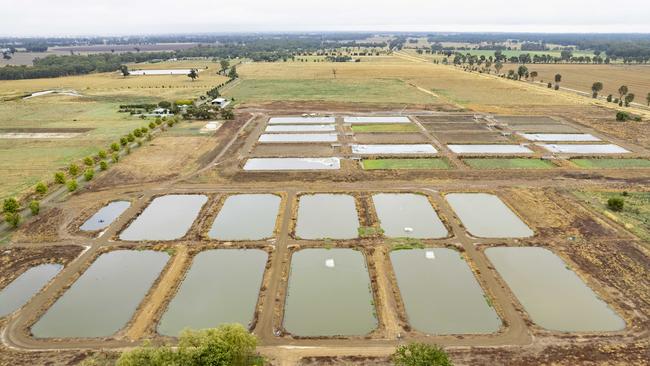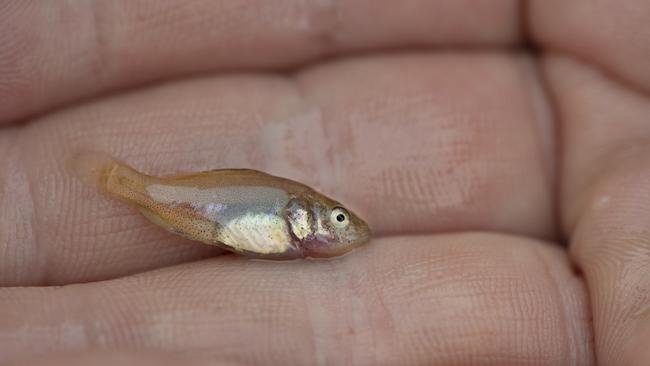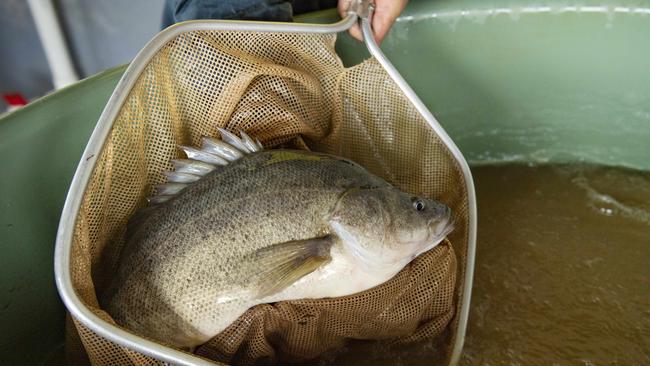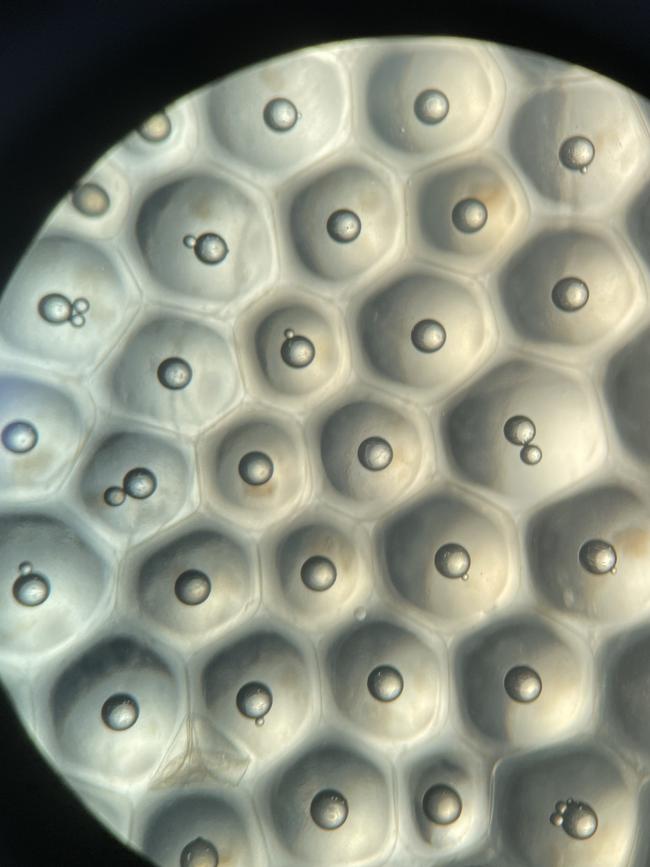Arcadia fish hatchery pumps out 500,000 Murray cod and golden perch
Massive Murray cod have been brought into Arcadia fish hatchery to help rear the next generation of river monsters. See how it works and the exclusive videos.
It sounds simple – buy an old Arcadia dairy farm, scrape out a series of 1.5m deep ponds, fill them with bore water, toss in a few bales of lucerne chaff, plus a dose of DAP fertiliser and, hey presto, you’ve got a native fish nursery.
But the reality of breeding and rearing 500,000 one-gram Murray cod and golden perch at Victoria’s newest fish nursery for release into the wild, is far more complex.

The chaff and fertiliser trigger an algal bloom that mimics what happens when water spills out onto Murray Darling Basin’s floodplain, filling billabongs, backwaters and depressions — before receding again.
Species such as golden perch have evolved to follow the floodwaters and hunt out these protected depressions to lay their eggs, leaving light and accumulated leaf litter to fuel an algal bloom that will feed their young until the floods return.
But less frequent flooding, and high and cold summer flows have turned the tide against native fish, leading Victorian and NSW fisheries authorities to build nursery ponds in farm paddocks that recreate the billabong effect – called the green water technique.
A small team of three manage 20 plankton ponds at the Victorian Fisheries Authority’s Arcadia site, with production supervisor Jarryd McGowan constantly monitoring the plankton population.

“We replicate the flood event of a forest,” Mr McGowan said, with algae (phytoplankton) the first species to appear in a newly filled pond, followed by herbivores that feed on them, such as rotifers, then larger more competitive daphnia, before some of the bigger carnivorous species, such as Cyclopoid copepods, move in as well as water beetles, blood worms and snails.

Fish larvae introduced to the pond at the start of the green water process are able to tap into each new wave of ever larger plankton species as they too grow, based on what Mr McGowan described as the simple fact that what they ate was determined by “their mouth size”.
All up it takes 40 to 60 days to for fish larvae to grow out to the one gram weight needed for release into the state’s rivers and wetlands, with temperature playing a big role growth rates.

Each nursery pond is designed like a giant 60m by 30m bath tub, in which a plug can be pulled at its lowest point to drain the fish into a pipeline network that delivers them to a V-shaped pit, where they are collected in modified plastic fruit bins, which are then towed away by tractor for shipment and release.
VFA native fish hatchery director Anthony Forster said the process eliminated the need for workers to wade into ponds to herd and net fish, which could damage the scales and skin of young fish, leading to fungal infections and parasitic infestations.
Arcadia program manager Ryan Burniston said in reality they were plankton farmers first and foremost, but it’s clear he and the team are passionate and protective of the farm’s big brood fish.

Up until now the nursery has been reliant on sourcing cod larvae from the Snobs Creek hatchery.
But last week work started on building the foundations for Arcadia’s own hatchery, where cod eggs will be incubated with fresh, temperature-controlled water for three days until they hatch, after which they are fed artemia zooplankton to boost their growth before being released in the nursery ponds as 10-day old free swimming larvae.
In the meantime the Arcadia team is populating each of their 12 brood ponds with up to 20 metre-long Murray cod, which have often been rescued by VFA electrofishing contractors from irrigation channels and drying wetlands.
Mr Forster said the fish would pair up, with the males fighting – sometimes to the death – for the best nesting sites into which they could woo females next season.
Unlike their young, the adult cod will be fed on carp fillets, chicken necks, yabbies and the odd wild duckling that settles on the ponds.
Breeding will start in September, with the males marking out their territories around artificial nests the VFA team have made from three flywire screens panels formed into an open V-shaped tent, which mimic the hollow logs they normally breed in.
Mr Burniston said the nesting boxes would be inspected every two days from September to December, with the flywire peeled out of the bottom panel to extract the fertilised eggs.
The team has already been breeding golden perch, taking a couple of males and females from each brood pond to injected with hormones to artificially induce spawning in tanks that have been installed in the property’s old dairy.



Once the free floating eggs have hardened off in the tanks and the larvae grown out to five-days of age they are introduced to a fresh nursery pond.
Mr Forster said the hatchery’s 170ha site would eventually include a $3 million visitors’ centre, allowing the public to cast a line into the property’s existing 40 megalitre turkey’s nest dam, which will be set up as a family fish-out pond, with surrounding BBQs.


